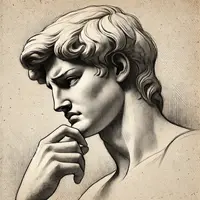In the annals of Western philosophy, few allegories have captured the human imagination as vividly as Plato's Allegory of the Cave. This profound narrative, found in Book VII of 'The Republic,' serves as a powerful metaphor for the journey from ignorance to enlightenment. The cave, with its shadows and chains, is not merely an ancient philosophical tale; it is a mirror reflecting the human condition and the barriers we face in the pursuit of truth. Understanding this allegory invites us to examine the shadows that cloud our perception and the chains that bind our minds, urging us to seek a world of deeper understanding and knowledge.
The story begins in a dark cave where prisoners are chained, facing a blank wall. Behind them, a fire burns, and between the fire and the prisoners, objects are moved, casting shadows on the wall. To the prisoners, these shadows are reality; they know nothing beyond this dim world. This scenario is not just a distant philosophical construct but a poignant commentary on human experience. How often do we, too, accept shadows as reality, influenced by societal norms, media narratives, and personal biases? The chains in Plato's cave are not just physical bonds but mental constraints that prevent us from questioning the status quo and seeking deeper truths.
The journey of the freed prisoner, who ascends from the cave into the blinding light of the sun, symbolizes the arduous path to enlightenment. This ascent represents the philosopher's quest for knowledge and truth beyond the immediate and apparent. In our contemporary lives, this journey can be seen as the pursuit of self-awareness and critical thinking. It is a call to question the superficial truths we are often presented with and to strive for a more profound understanding of ourselves and the world around us. The sun, the ultimate source of light and truth in the allegory, encourages us to seek wisdom and clarity in a world often shrouded in illusion and misinformation.







